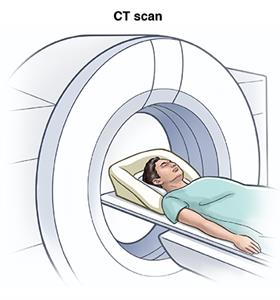Developmental Venous Anomalies
What are developmental venous anomalies?
A developmental venous anomaly (DVA) is a problem with the way small veins are arranged. They may look like the spokes of a wheel. The veins drain into a larger central vein. DVAs are not cancer (benign).
DVAs also may be called venous angiomas or benign variations in venous drainage. Some doctors refer to them as caput medusae. This is a Latin term that means head of Medusa.
These unusual vein formations can occur anywhere in the body. But they are found most often in the brain or spinal cord. As many as 1 in 50 people has at least one DVA.
What causes developmental venous anomalies?
DVAs are vein problems that you are born with (congenital).
What are the symptoms of developmental venous anomalies?
DVAs generally don't cause symptoms. Many people don't know that they have one.
How are developmental venous anomalies diagnosed?
DVAs may only be found when you have imaging tests to look for the cause of other health problems. Imaging tests may include MRI or MRA, conventional angiogram, or specific types of CT scans that show areas of blood flow.
Most people may never know they have a DVA. It will only be found after their death, if an autopsy is done.
How are developmental venous anomalies treated?
DVAs often don't require treatment. These veins work correctly to get blood in and out of the brain. They don't need to be removed or closed. Because they are normal and not dangerous, you often don't need to get imaging tests over the long term.
Key points about a DVA
A developmental venous anomaly (DVA) is a problem with the way small veins are arranged. They that may look like the spokes of a wheel that drain into a larger central vein.
DVAs are something you are born with.
DVAs are not dangerous. Most people don't know that they have them.
DVAs may only be found when doing imaging tests to look for the cause of other health problems.
DVAs don't need to be treated.
Next steps
Tips to help you get the most from a visit to your healthcare provider:
Know the reason for your visit and what you want to happen.
Before your visit, write down questions you want answered.
Bring someone with you to help you ask questions and remember what your provider tells you.
At the visit, write down the name of a new diagnosis, and any new medicines, treatments, or tests. Also write down any new instructions your provider gives you.
Know why a new medicine or treatment is prescribed, and how it will help you. Also know what the side effects are.
Ask if your condition can be treated in other ways.
Know why a test or procedure is recommended and what the results could mean.
Know what to expect if you do not take the medicine or have the test or procedure.
If you have a follow-up appointment, write down the date, time, and purpose for that visit.
Know how you can contact your provider if you have questions.

Connect with us:
Download our App: